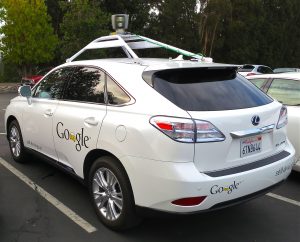
Manufacturers are already including self-driving hardware in both today’s vehicles and those designed to be built tomorrow.
I remember long ago, when I bought my first plasma TV, looking at the back panel and seeing some strange-shaped signal inputs; receptacles other than RCA jacks and coax and S-video connections. I asked the salesman what they were for. He said they were input jacks for the future, I didn’t need to worry about them then, but when the newest technology became common and popular my TV would be ready.
Now it’s 2017. And welcome to the era of new technology cars, some already in showrooms, ready to drive themselves, even if they can’t do so legally yet.
Tesla just announced that all their vehicles currently in production have the hardware necessary for full self-driving capability. They feature eight surround cameras providing 360-degree visibility at a range of up to 250 meters. Complementing this vision are 12 updated ultrasonic sensors, allowing for the detection of objects at nearly twice the distance of Tesla’s prior, not-universally-installed system.
New Tesla vehicles also feature forward-facing radar with enhanced processing that enables it see though everything from Seattle rain storms and San Francisco fog to central Arizona dust storms and even the car ahead. A new onboard computer with more than 40 times the power of previous systems ties the vision, sonar and radar processing software all together.
And that’s just Tesla. We here in Arizona continue to see lots and lots of cars from Waymo, the self-driving car company started by Google, testing on city streets. Nissan, General Motors, Volkswagen, Honda, BMW and Mercedes are also testing autonomous cars in real-world traffic. So are companies like Bosch and Delphi that are developing just the self-driving technology, adaptable to almost any vehicle.
Two other car manufacturers about to begin mass production of autonomous-capable cars are Faraday Future and Lucid Motors, the company that recently announced it was building a $700 million plant in Casa Grande, Arizona.
You may or may not like the idea of autonomous vehicles but they’re the shape of things to come. All they need now is government approval and a software update.
